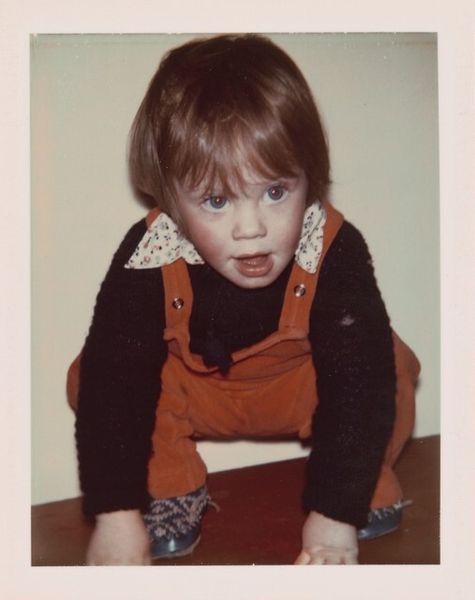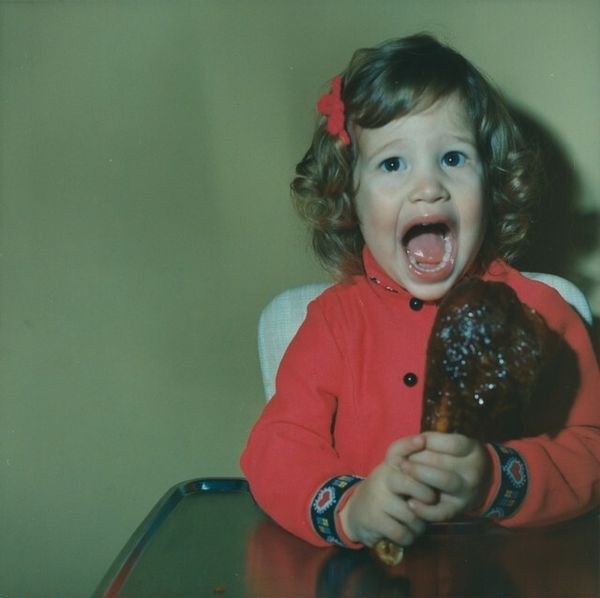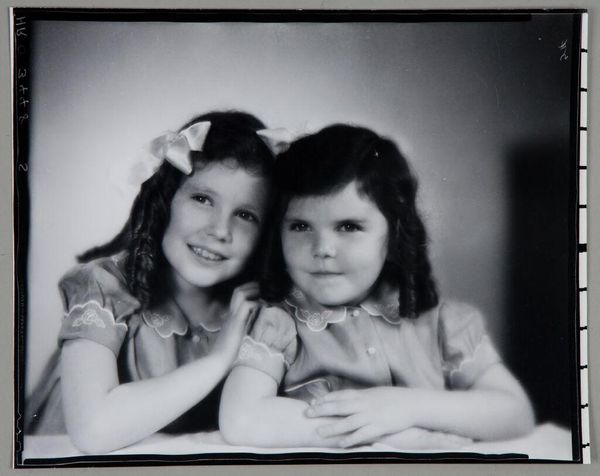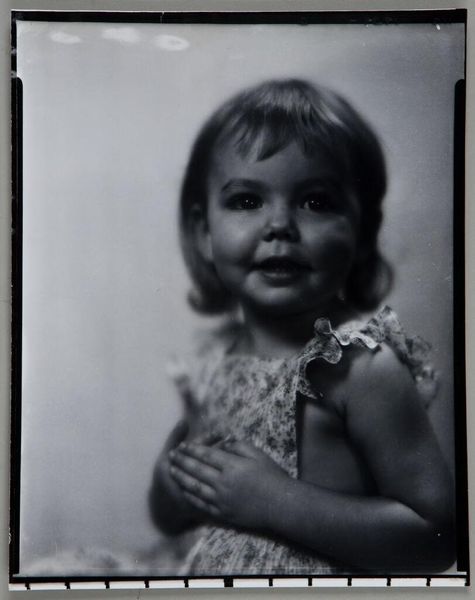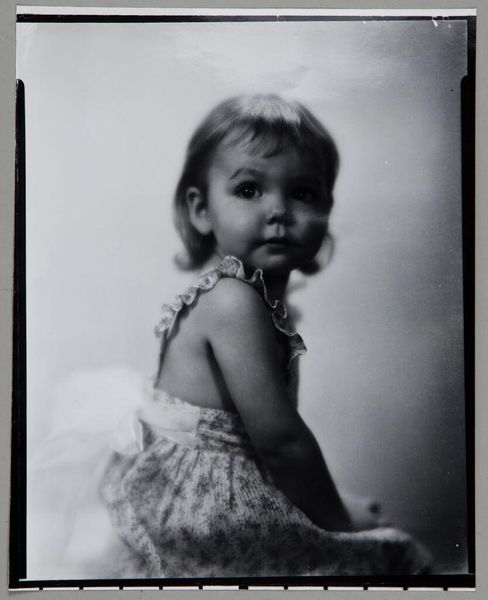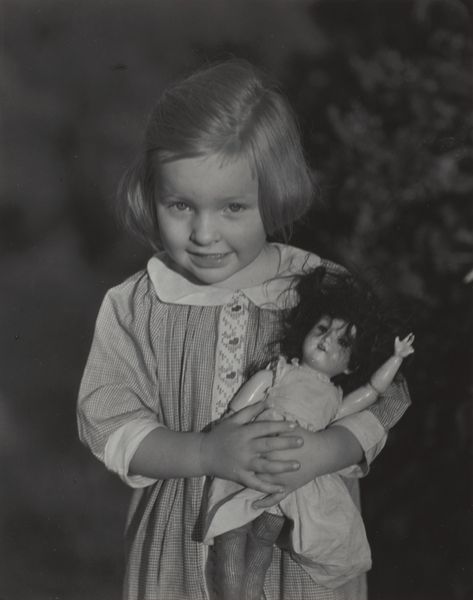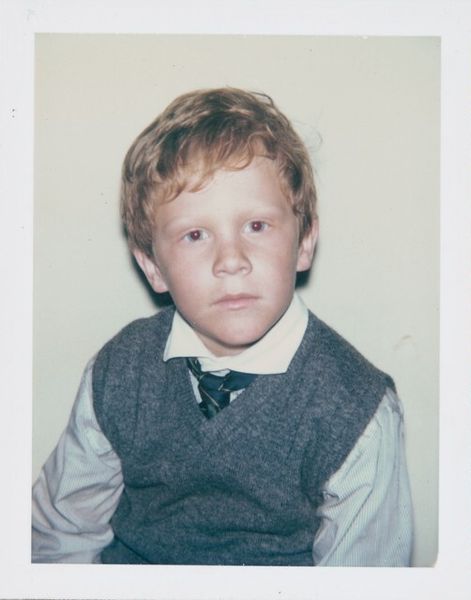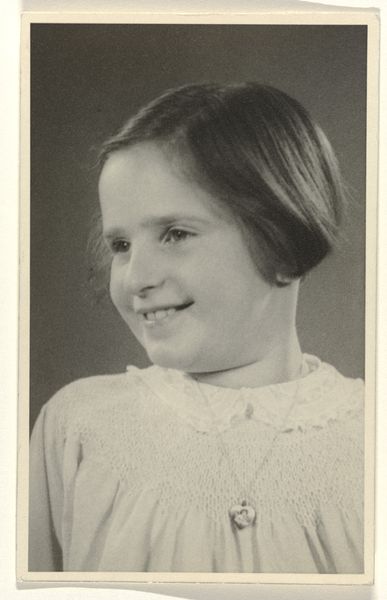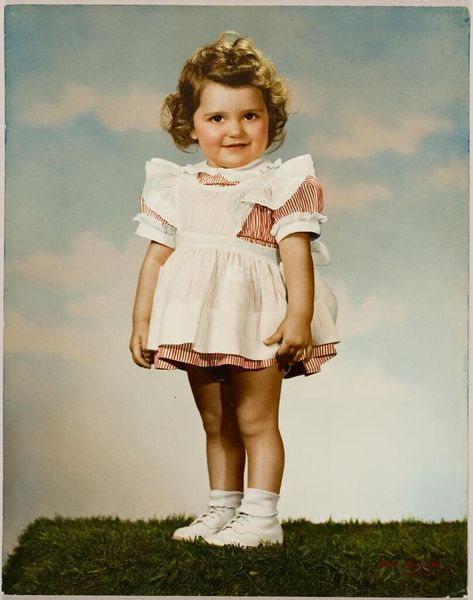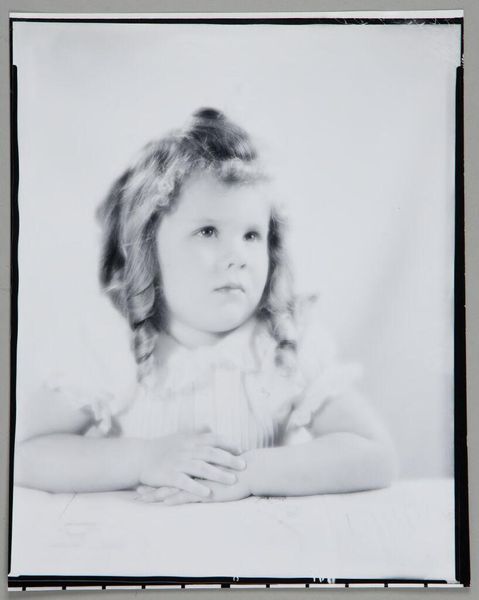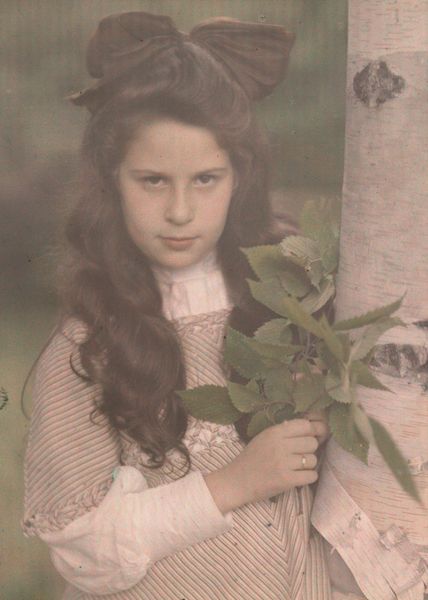
Dimensions: image: 9.5 × 7.3 cm (3 3/4 × 2 7/8 in.) sheet: 10.8 × 8.6 cm (4 1/4 × 3 3/8 in.)
Copyright: National Gallery of Art: CC0 1.0
Curator: This is Andy Warhol's portrait of "Cora Bischofberger," taken in 1984. A vibrant pop art image rendered through the immediacy of Polaroid photography. Editor: My first thought is of a lost innocence. There's something incredibly fragile in the way she holds her hands, almost prayer-like, set against this bright, almost synthetic color palette. Curator: I'm intrigued by Warhol's choice of subject here. It is a portrait of Bruno Bischofberger’s daughter, and considering Warhol's fascination with celebrity and social circles, the work then takes on a new depth by capturing this personal connection in an era that redefined the production of image and portraiture. The ephemerality of the Polaroid, instantly consumed... Editor: Yet, she reminds me of the Renaissance child portraits. A youthful face imbued with the seriousness, those direct, almost knowing eyes that mirror a more mature spirit within the innocence. This Polaroid, with its washed out color, echoes the style. Curator: Yes, and you bring up a strong point, because it could also be read as a subtle commentary on consumption, even celebrity, through the commodified simplicity and accessibility of instant film. It highlights the raw, material aspect of celebrity, capturing it in a quickly-produced and arguably more egalitarian format, almost contrasting against high-gloss production of fame. Editor: Looking closely, even the freckles, like tiny constellations on her face, have a symbolic charge. Each could be seen as a marking of authenticity, of human touch against this backdrop of mass production and the industrial celebrity machine you’re highlighting. Curator: Well put. Perhaps Warhol aimed for more with the process and aesthetic he used in portraying her. He takes the everyday medium of instant photography and elevates an ordinary subject with his style to explore production methods. It definitely adds more depth. Editor: So we’re left contemplating not just a portrait, but also an icon, built of freckles, celluloid, and an echo of an old master style... and the context in which she was portrayed. Food for thought indeed. Curator: Agreed. I leave this with more in my mind. Thank you.
Comments
No comments
Be the first to comment and join the conversation on the ultimate creative platform.
